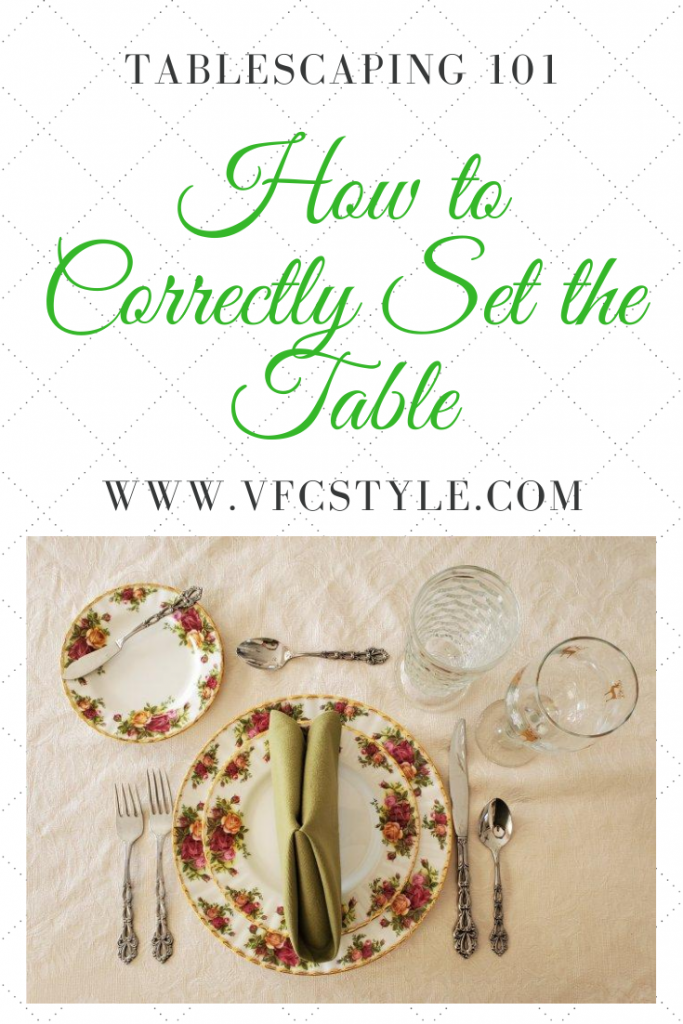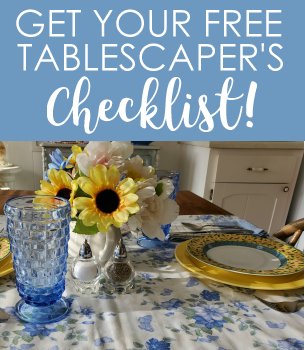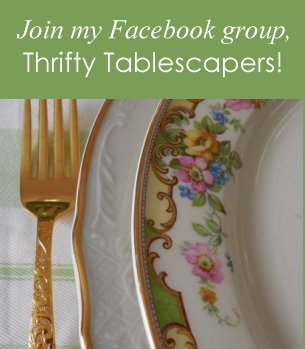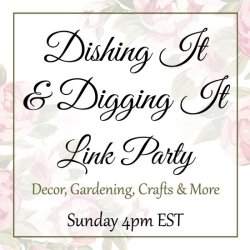Welcome to my new blog post series, Tablescaping 101! This series will introduce you to – and help you learn to truly enjoy – the practice and art of setting the table!
You might be new to the concept of tablescaping – which really is just a fancy way of saying, “setting the table.” I tend to think of “setting the table” as something very basic, while “tablescaping” elevates it by giving a little more thought to style, design, and aesthetic. But really, whether you’re tablescaping or just setting the table, there is a correct way to arrange the place setting. And I – much to my surprise – found out as recently as a couple of years ago that I was doing it wrong!

In this post we’ll cover the basics of casual and formal place settings, and consider briefly why it’s important to do them correctly. As you’ll see throughout this series, there’s more than enough room for creativity while still adhering to the basic rules.
To begin, let’s look at the correct placement of elements in a casual place setting.
The basic place setting most people use when sitting down to dinner, at least in the U.S., consists of dinner plate, fork, knife, spoon, napkin, and water glass. These elements are set like this:
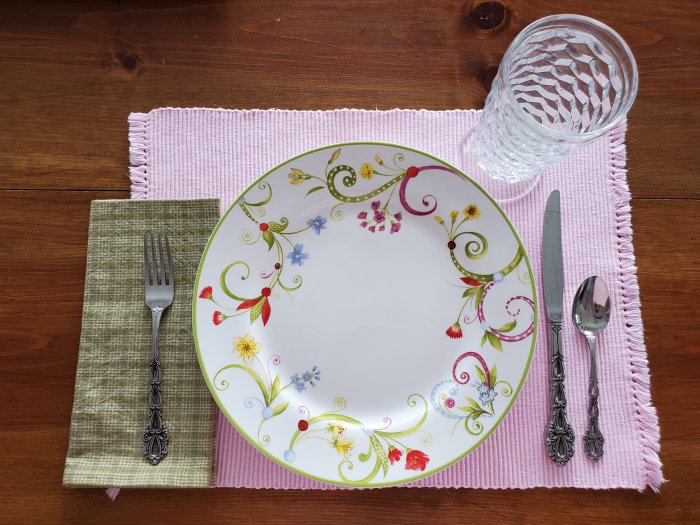
Working from the left, we have the napkin & dinner fork, dinner plate, dinner knife, and teaspoon, with the water glass set to the upper right of the dinner plate.
There’s actually some dissent about the napkin placement: some people set it to the left of the fork instead of under it, some set it on the plate.
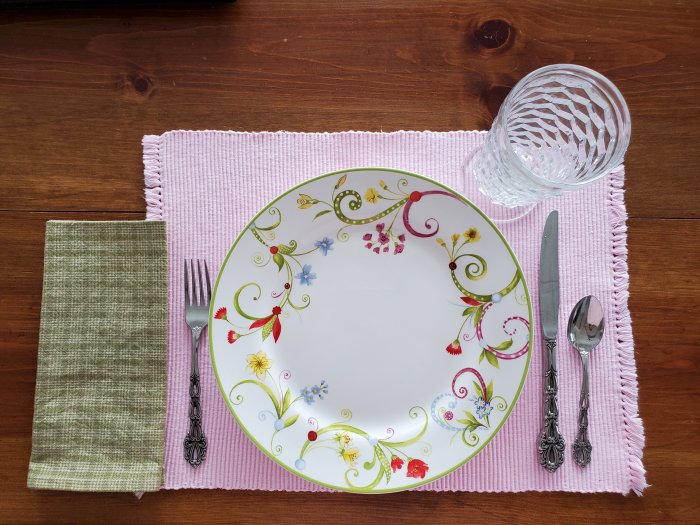
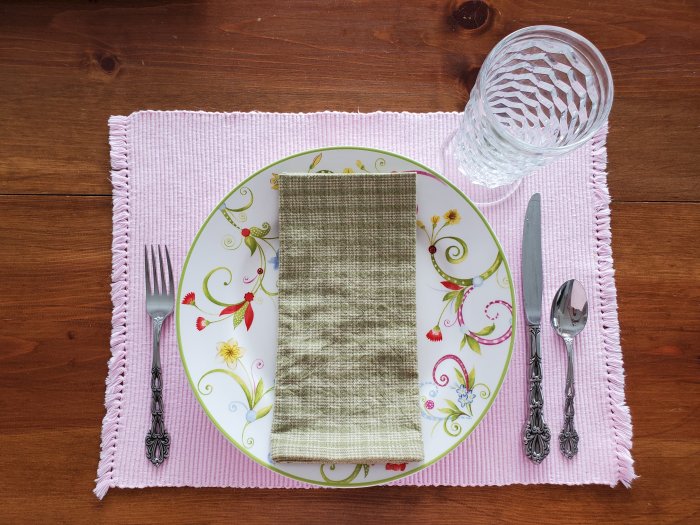
Another option is to move the napkin to the right: in virtually every table I’ve set where the napkin is folded flat like this, I’ve set it under the right-side utensils. But my favorite way is to give the basic setting just a smidge more personality by setting the napkin on the plate or off to the upper left, inside a napkin ring!
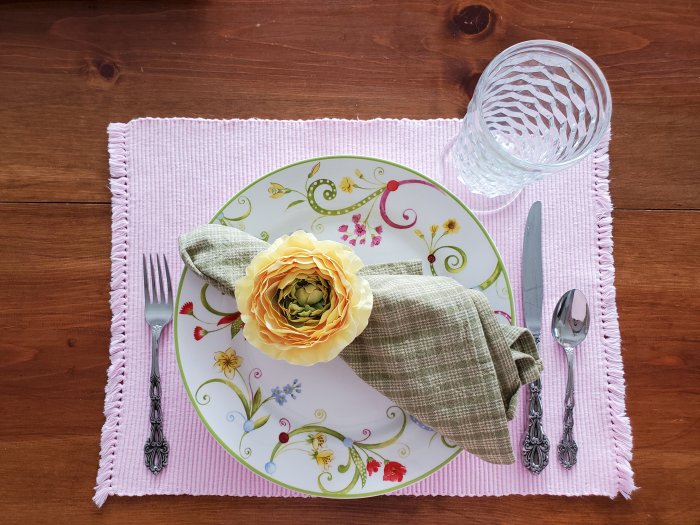
Taking a step beyond this basic setting, if you were to add a salad course to the meal, you would simply need to add the plate and the salad fork. The salad fork is set to the left of the dinner fork, and the salad plate can be placed on top of the dinner plate. If you ever sit down at someone else’s table and wonder which fork to use, remember: with flatware, work from the outside in!
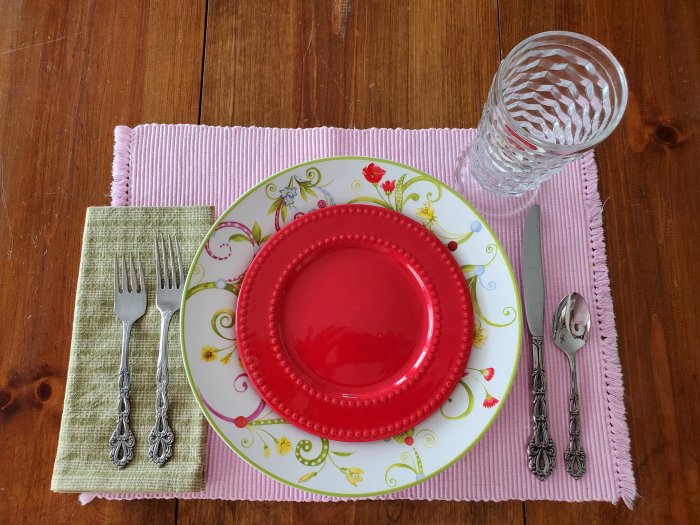
It’s actually a very short hop from casual to formal. Here’s a basic formal setting that includes a few more pieces: a bread plate and butter knife to the upper left of the dinner plate, a wine glass to the right of the water glass, and a dessert spoon across the top of the plate.
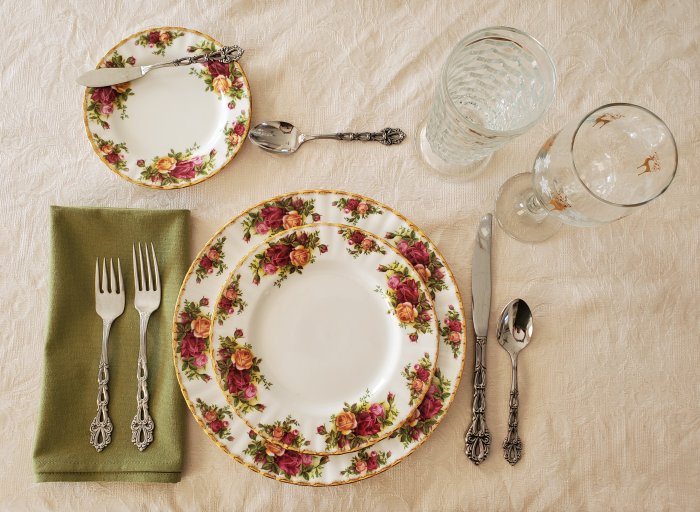
Here’s the same setting with a couple of napkin options:
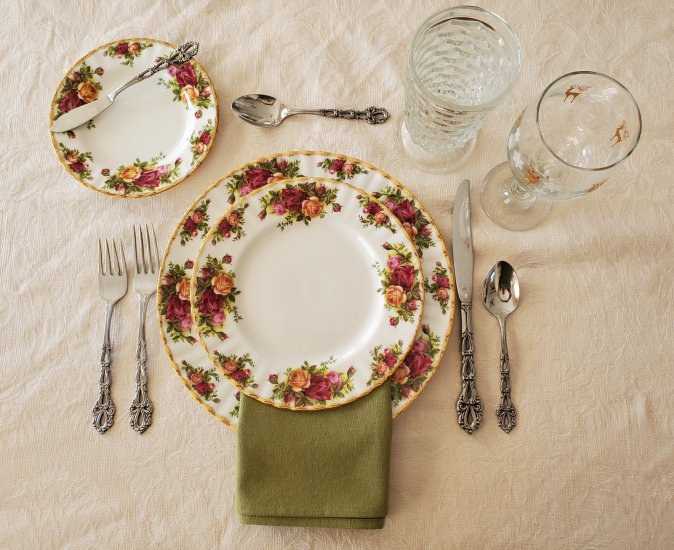
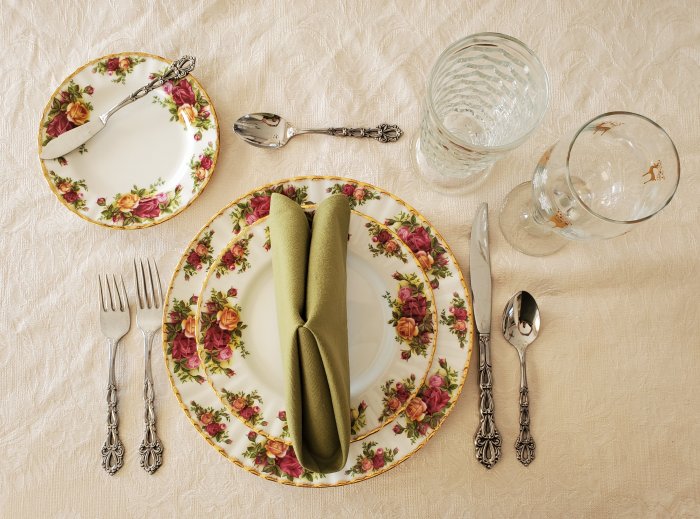
These are the basics of setting a table properly, working our way from a casual setting to a more formal multi-course style.
Wandering napkins aside, I think it’s always worthwhile to take a moment to set the table correctly, even at the most basic level.
Why? As with so many other things in life, standardization is good because it brings order to potential chaos. Imagine if time pieces weren’t standardized: everyone’s clocks would have the same numbers on them, but sunrise at Ted’s house might be at 6:30 while at Bob’s it could be at 10:25. They’d never get that squash game going!
Furthermore, with order comes comfort – or at least familiarity. Your guests have been taught to use the forks “from the outside in,” so why make them fumble for the right utensil at your house?
Finally, setting the table correctly each time – and therefore creating order and familiarity – ensures that guests will be able to focus their attention on engaging in conversation, building relationships, and actually enjoying the food and the fellowship of the meal, rather than worrying over whether they’re using the right fork. A proper table setting conveys respect to your guests (or family members) and shows them that you want them to be comfortable and to enjoy themselves.
Taking time to set the table is a great way to involve the kids in meal time, by the way. Even pre-schoolers can help set items on the table, and can easily learn the correct way to do things. It may surprise you to know that I also encourage you to let your children handle the “good china,” because proper reverence for breakables and valuable things is an important trait to instill.
Next up in the Tablescaping 101 series: tips for planning your next tablescape!
Here’s an image to use on Pinterest if you’d like to save this post for future reference!
